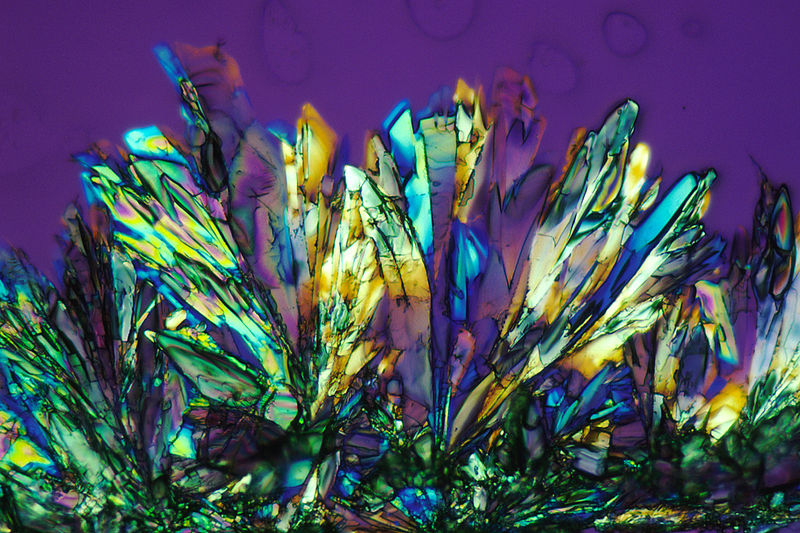
Figure 1 – Photomicrographs of the drug AZT were taken at magnifications of 30x and 50x. Used to illuminate the crystals were polarized and darkfield lighting techniques. AZT is thought to help prevent the replication of HIV, the AIDS virus, also known as HTLV-III. Image from the US NCI by Larry Ostby, 1986. FRom the Wikimedia Commons and in the public domain.
A reader posted on Facebook yesterday this interesting set of images by Andy Ellison, who is an MRI technologist at Boston University Medical School’s Center for Biomedical Engineering. These are three dimensional scans (a set of slices of produce, yes that’s right vegetables). As is so often the case with natural structures these a stunningly beautiful. But a couple of critical questions came to mind. Do they present a new vision? Do they present new botanical information? And all of this got me thinking again about the relationship between science and art and the transitional spectrum between pure science and pure art.
We recently spoke about X-ray images by Arie van’t Riet, which are clearly more in the realm of art – particularly in the colorization. You may, in a sense imagine what it would like to have X-ray vision, like Superman. And, of course, that is the very point isn’t it? We used to see only our red, green, blue world. Now we get to see all over the electromagnetic spectrum and even other spectra like the MRI. All of this extends human vision, revealing new ways of seeing.
It strikes me as curious. We see science and art as two different viewpoints. But arguably the purpose of this kind of imagery, when it is scientific is to present a new and different vision of the world. When it is artistic in nature, the purpose is to present a new and different, often an individualistic, vision of the world. How can two supposedly diametrically opposed viewpoints share the same purpose?
I have made a big deal about the strictures of scientific art. Science sets rules about image manipulation. Fine, but this has nothing to do with whether the image is artistic. It is just like writing a fugue. There are rules that you must follow. But this has nothing to do with the magnificence of the piece.
One is tempted to say something like: science can be art, but art cannot be science – as if it were a corollary to this rule concept. This is meaningless and discipline chauvinistic. Science, in this context, does not possess a higher purpose than art.
I think that the important point to be made is that when science becomes art, it is typically the artistic expression of an individual artist. This artist chooses the composition, chooses the colors, chooses the dynamic range. The fact that it starts as science is only relevant in that the palette chosen, the expressive elements, are scientific in origin. The creator transcends science and really becomes an artist. Similarly, the artist may choose to adopt a scientific palette. A clear example of this is the photomicrographs of Roman Vishniac. What I am saying is that all art is art. All purpose is to present the artist’s vision.
